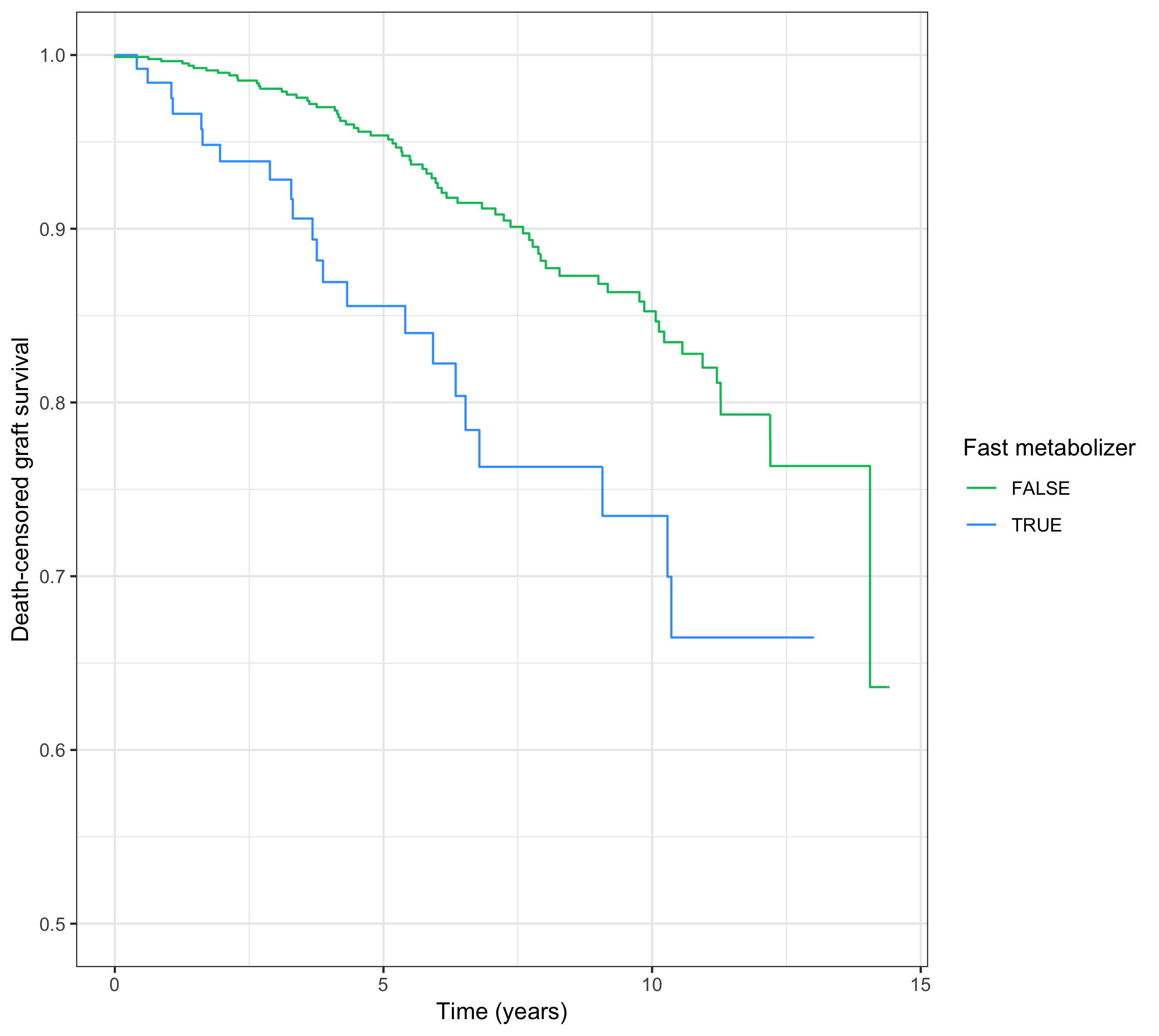Tacrolimus Concentration/Dose Ratio is an Independent Predictor of Death-Censored Kidney Allograft Survival
1Nephrology, Dialysis, Aphereses and Transplantation Department, Grenoble University Hospital, Grenoble, France, 2Pharmacology, Pharmacogenetics and Toxicology Laboratory, Grenoble University Hospital, Grenoble, France, 3Urology and Kidney Transplantation Department, Grenoble University Hospital, Grenoble, France
Meeting: 2019 American Transplant Congress
Abstract number: A231
Keywords: Calcineurin, Graft survival, Pharmacokinetics
Session Information
Session Name: Poster Session A: Kidney Immunosuppression: Novel Regimens and Drug Minimization
Session Type: Poster Session
Date: Saturday, June 1, 2019
Session Time: 5:30pm-7:30pm
 Presentation Time: 5:30pm-7:30pm
Presentation Time: 5:30pm-7:30pm
Location: Hall C & D
*Purpose: Tacrolimus (Tac) remains the cornerstone of kidney transplantation immunosuppression. Its narrow therapeutic index demands therapeutic drug monitoring. The C/D ratio (Tac trough concentration / daily Tac dose) was shown to be associated with Tac nephrotoxicity and early acute rejection. We herein investigated the value of the C/D ratio in predicting graft survival.
*Methods: We retrospectively analyzed the cohort of Tac-treated kidney transplant recipient (KTr) between 2004 and mid-2018 at Grenoble University Hospital. We computed the median C/D ratio (medCDr) over time and separated fast metabolizers (C/D ratio < 1.05) from normal or slow metabolizers (C/D ratio ≥ 1.05). Using a multivariate Cox proportional hazard model, adjusting for the median C/D ratio, development of de novo Donor Specific Antibodies (dnDSA), body mass index (BMI), mean Tac trough levels and standard deviation of the Tac trough levels, we assessed whether the C/D ratio was a predictor of death-censored graft survival.
*Results: A total of 1011 KTr were included in the analysis. The mean Tac trough level was 6.65 µg/l, with an overall mean Tac dose of 3.33mg/day. Virtually all patients received Tac+Mycophenolate, with a usual Tac trough targeted range from 5 to 8 µg/l. The mean medCDr was 2.19, ranging from 0.24 to 8.57. 141 KTr had a medCDr<1.05. There were 92 death-censored graft losses, (23 in the fast metabolizer group). In the multivariate Cox model, the hazard ratio associated with the medCDr was 3.07 (p<.001), independently from dnDSA development (HR 2.79, p<.001) and mean Tac trough levels (HR 1.5, p<.001). Other factors were not significantly associated with KTr survival. As shown in figure 1, the survival difference reached 10% after 4 years and remained stable thereafter.
*Conclusions: Tacrolimus metabolization, as defined by the C/D ratio, independently impacts KTr death-censored graft survival.
To cite this abstract in AMA style:
Jouve T, Noble J, Fonrose X, Janbon B, Fiard G, Malvezzi P, Rostaing L. Tacrolimus Concentration/Dose Ratio is an Independent Predictor of Death-Censored Kidney Allograft Survival [abstract]. Am J Transplant. 2019; 19 (suppl 3). https://atcmeetingabstracts.com/abstract/tacrolimus-concentration-dose-ratio-is-an-independent-predictor-of-death-censored-kidney-allograft-survival/. Accessed December 24, 2025.« Back to 2019 American Transplant Congress

